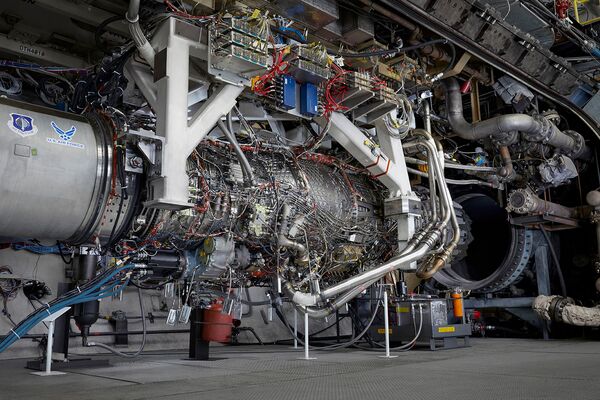
General Electric's XA100 adaptive cycle engine. Work on the XA100 is to be ported to the NGAP programme. (GE Aviation)
The Next-Generation Adaptive Propulsion (NGAP) engine is undergoing “detailed design activities” with the intention of building a prototype “within the next couple of years”, John Sneden, director of propulsion at the US Air Force (USAF) Life Cycle Management Center, told reporters on 1 August.
NGAP is intended to power the Next Generation Air Dominance (NGAD) fighter, an in-development aircraft meant to replace the F-22 as the USAF's primary air-to-air fighter. NGAD's development is largely classified, but the USAF released a request for proposal (RFP) on 18 May to build the aircraft, with selection anticipated in 2024.
Some of the technology for NGAP is likely to come from the Adaptive Engine Transition Program (AETP), an initiative focused on building a new engine for the Lockheed Martin F-35. AETP resulted in a General Electric-built testbed engine, but following the F-35 Joint Program Office's (JPO's) decision to move forward with modifications of the F-35's existing Pratt & Whitney F135 engine, AETP is set to wind down absent congressional intervention.
“Our activities are really focused on maturing the ‘depth of engine' technology with the remaining budget that we have left for AETP,” Sneden said. “We'll take our remaining budget … and port over the technology towards NGAP. The things that we're doing today, like focusing on adaptive fan engine controls, augmented performance operation, ceiling cooling technology, advanced materials, all that stuff will help support NGAP.”
“Because of the data that we've received [from AETP testing]… We understand the types of changes that we need to make, and we can incorporate that into the baseline for NGAP,” Sneden added.
Looking to read the full article?
Gain unlimited access to Janes news and more...







